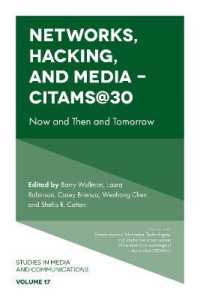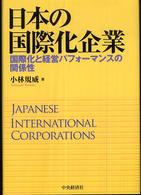Full Description
This volume explores word order change within the framework of diachronic generative syntax. Word order is at the core of natural language grammatical systems, linking syntax with prosody and with semantics and pragmatics. The chapters in this volume use the tools provided by the generative theory of grammar to examine the constrained ways in which historical word order variants have given way to new ones over time. Following an introduction by the editors, the book is divided into four parts that investigate changes regarding the targets for movement within the clausal functional hierarchy; changes (or stability) in the nature of the triggers for movement; verb movement into the left peripheries; and types of movement, with specific focus on word order change in Latin. Data are drawn from a wide variety of languages from different families and from both classical and modern periods, including Sanskrit, Tocharian, Italian, Portuguese, Dutch, Irish, Hungarian, and Coptic Egyptian. The book's broad coverage and combination of language-internal and comparative studies offers new perspectives on the relation between word order change and syntactic movement. The volume also provides a range of wider insights into the properties of natural language and the way in which those properties constrain language variation and change.
Contents
1: Ana Maria Martins and Adriana Cardoso: Word order change from a diachronic generative syntax perspective
Part I Targets for movement: Changes in the functional architecture of the clause
2: Moreno Mitrović: Configurational change in Indo-European coordinate constructions
3: Adriana Cardoso: Discontinuous noun phrases and remnant-internal relativization in the diachrony of Portuguese
4: Julia Bacskai-Atkari: The relative cycle in Hungarian declaratives
5: Barbara Egedi: Word order change at the left periphery of the Hungarian noun phrase
Part II Triggers for movement: Changes in nature or stability
6: Veronika Hegedűs: Particle-verb order in Old Hungarian and complex predicates
7: Judy B. Bernstein: An effect of residual T-to-C movement in varieties of English
8: Cara M. DiGirolamo: Word order and information structure in the Würzburg Glosses
Part III Verb movement into the left peripheries
9: Charlotte Galves and Alba Gibrail: Subject inversion in transitive sentences from Classical to Modern European Portuguese: A corpus-based study
10: Chris H. Reintges and Sonia Cyrino: Analyticization and the syntax of the synthetic residue
11: Gertjan Postma: Loss of laten-support in embedded infinitivals in fifteenth-century Low Saxon
12: Jacopo Garzonio and Cecilia Poletto: The distribution of quantifiers in Old and Modern Italian: Everything or nothing
Part IV Types of movement and its constraints: Word order change in Latin
13: Lieven Danckaert: The decline of Latin VOAux: Neg-incorporation and syntactic reanalysis
14: Adam Ledgeway: On the decline of edge-fronting from Latin to Romance







